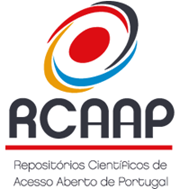CONOCIMIENTO Y APLICACIÓN DE LA LEY DE LENGUAS Nº: 4251 DEL PARAGUAY EN LA CIUDAD DE ENCARNACIÓN
DOI:
https://doi.org/10.25746/ruiips.v4.i4.14442Keywords:
Ley de Lenguas. Lenguas oficiales. Paraguay. Law of Languages. Official languages.Abstract
RESUMENLéi 4251 ñe’ẽnguéra rehegua, oî ha ojepuru 29 jasypakõi 2010 guive.El 29 de diciembre de 2010, el Poder Ejecutivo Paraguayo promulgó la Ley No. 4251 de lenguas, con 52 artículos que reglamentan los artículos 77 y 140 de la Constitución Nacional, que definen la situación lingüística del Paraguay. Crea la Secretaría de Políticas Lingüísticas y la Academia de la Lengua Guaraní. Además de las lenguas oficiales, castellano y guaraní, protege las lenguas indígenas del Paraguay y el lenguaje de señas. Se posibilitan más espacios para la promoción y difusión de la lengua guaraní. Indagar sobre el conocimiento y aplicación de la Ley No. 4251 de Lenguas, en la ciudadanía es el objetivo de esta investigación realizada desde un enfoque exploratorio-descriptivo. Se aplicaron encuestas con cuestionarios tipo Lickert a una población de funcionarios públicos, empleados de empresas, estudiantes, ciudadanos mayores de 18 años, en un muestreo ocasional o no aleatorio. La población reconoce el bilingüismo y la existencia de una Ley de Lenguas aunque es preciso insistir en su promoción y difusión. Las universidades paraguayas deberían incorporar el guaraní comunicativo, como asignatura transversal al currículo, atendiendo la población bilingüe con la que cualquier profesional puede encontrarse al momento de desempeñarse laboralmente.
ABSTRACT
Léi 4251 ñe'ẽnguéra rehegua, oî ha ojepuru 29 jasypakõi 2010 guive. On December 29, 2010, the Paraguayan Executive branch enacted Law No. 4251 of languages, with 52 articles that regulate articles 77 and 140 of the National Constitution, which define the linguistic situation of Paraguay. Creates the Ministry of Linguistic Policies and the Academy of the Guarani Language. In addition to the official languages, Castilian and Guarani, it protects the indigenous languages of Paraguay and sign language. More spaces are available for the promotion and dissemination of the Guaraní language. To inquire about the knowledge and application of Law No. 4251 de Lenguas, in the citizenship is the objective of this investigation realized from an exploratory-descriptive approach. Lickert questionnaires were applied to a population of public officials, employees of companies, students, citizens over 18 years of age, in an occasional or non-random sampling. The population recognizes bilingualism and the existence of a Law of Languages although it is necessary to insist on its promotion and diffusion. Paraguayan universities should incorporate communicative Guaraní, as a subject transversal to the curriculum, attending to the bilingual population with which any professional can be found at the time of work.
Downloads
Published
How to Cite
Issue
Section
License
Authors publishing in this journal agree to the following terms:
Authors retain copyright and grant the journal the right of first publication, with the article simultaneously licensed under the Creative Commons Attribution License that allows sharing of the work with acknowledgement of authorship and initial publication in this journal.
Authors are permitted to enter into additional contracts separately for non-exclusive distribution of the version of the article published in this journal (e.g., publish in an institutional repository or as a book chapter), with acknowledgment of authorship and initial publication in this journal.
Authors have permission and are encouraged to publish and distribute their work online (e.g., in institutional repositories or on their personal webpage) at any point before or during the editorial process, as this may generate productive changes, as well as increase the impact and citation of the published work.




